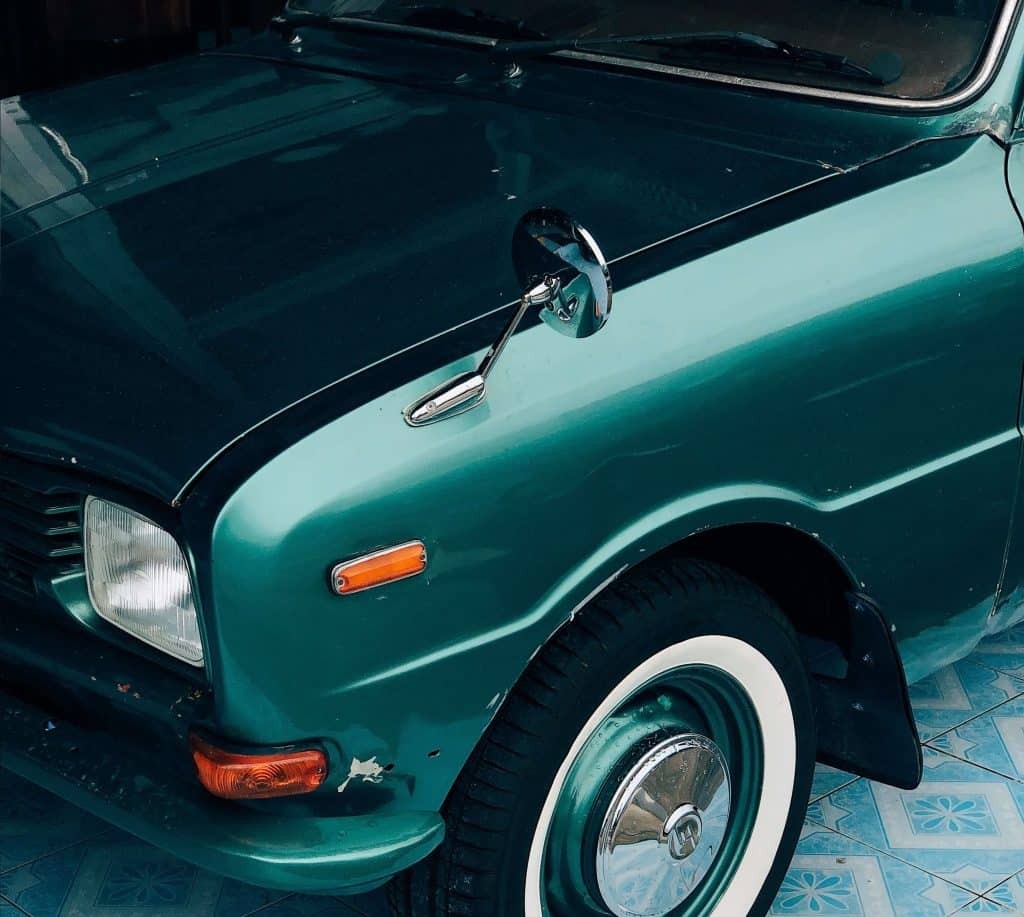Your car’s paintwork is often the first thing people notice, and keeping it pristine is a point of pride for many car owners. Scratches, however, are an unfortunate reality of car ownership. Whether it’s a minor brush against a bush or a more noticeable key mark, scratches can detract from your car’s appearance and even reduce its resale value. Fortunately, Removing Scratches From Car Paint is often a task you can tackle yourself at home.
This comprehensive guide will walk you through everything you need to know about car scratch removal. We’ll cover the different types of scratches, how to identify them, and the most effective DIY methods for removing them and keeping your car looking its best.
Understanding Car Paint Scratches: Types and Identification
Before you reach for any scratch removal products, it’s crucial to understand the type of scratch you’re dealing with. Car paint typically consists of several layers:
- Clear Coat: This is the outermost layer, providing gloss and protection against UV rays and environmental damage.
- Base Coat (Color Coat): This layer provides the actual color of your car.
- Primer Coat: This layer promotes adhesion between the base coat and the metal body, also offering corrosion protection.
- Metal Body: The actual structure of your car.
Scratches can affect one or more of these layers, and knowing which layer is affected dictates the best approach for removal. The three main types of car scratches are:
1. Clear Coat Scratches: Minor Surface Imperfections
Clear coat scratches are the most common and least severe type. They only affect the clear top layer of your car’s paint. These superficial scratches are typically caused by:
- Light brushes with branches or bushes.
- Improper car washing techniques.
- Fine debris and dust.
- Minor scuffs and scrapes.
These scratches are usually shallow and can often be removed relatively easily with basic techniques and products.
2. Base Coat Scratches: Deeper into the Color
Base coat scratches are more serious, as they penetrate through the clear coat and into the colored base coat layer. They are often caused by:
- Slightly heavier impacts from road debris like small stones.
- Keying or deliberate scratching.
- More forceful brushes against objects.
These scratches are deeper and require more attention than clear coat scratches, often needing a touch-up approach to restore the color layer.
3. Primer Coat Scratches (Deep Scratches): Reaching the Undercoat
Primer coat scratches, also known as deep scratches, are the most severe type for DIY repair. They go through the clear coat, the base coat, and reach the primer layer. These are typically caused by:
- More significant impacts, like scraping against a pole or another car.
- Vandalism causing deep gouges.
- Accidents and collisions.
Primer scratches are the most challenging to repair at home and may require professional intervention for a flawless finish, especially if they reach the bare metal and risk rust.
 Close up of car scratch on a red car
Close up of car scratch on a red car
Close-up view of a car scratch on a red vehicle, highlighting the damage to the paintwork.
Identifying the Type of Car Scratch: The Fingernail Test and Polish Method
Accurately identifying the type of scratch is the first step to choosing the correct removal method. Here are two simple methods to help you determine the depth of the scratch:
1. The Fingernail Test:
This is a quick and easy way to gauge scratch depth.
- Clean the scratched area: Wipe the area with a clean, dry microfiber cloth to remove any dirt or debris.
- Run your fingernail lightly across the scratch: Move your fingernail perpendicular to the scratch.
- Analyze the result:
- If your fingernail does not catch: The scratch is likely a clear coat scratch. It’s shallow and only on the surface.
- If your fingernail catches slightly: This indicates a base coat scratch. You can feel the depth, meaning it has gone through the clear coat.
- If your fingernail catches deeply and gets stuck: This is a primer or deep scratch. You can feel significant depth, possibly down to the primer layer or even metal.
2. The Polish Test:
This method uses car polish to help visually determine scratch depth.
- Apply car polish: Place a small amount of good quality car polish onto a clean microfiber cloth.
- Rub onto the scratch: Gently rub the polish into the scratched area using a circular motion. Apply light pressure.
- Wipe away excess polish: Use a clean part of the microfiber cloth to wipe away the excess polish and inspect the scratch.
- Evaluate the result:
- Scratch disappears: It’s a clear coat scratch. The polish has effectively filled and smoothed the minor imperfection.
- Scratch remains visible: It’s likely a base coat or primer scratch. The polish was not enough to remove the deeper damage.
Step-by-Step Guide to Removing Car Scratches at Home
Once you’ve identified the type of scratch, you can choose the appropriate removal technique. Here’s a breakdown of how to remove each type of scratch, from minor to more significant damage.
Removing Clear Coat Scratches: Simple DIY Solutions
For superficial clear coat scratches, these steps are usually sufficient:
Step 1: Thoroughly Clean the Scratched Area
- Wash the car: Use car wash soap and water to thoroughly clean the entire area around the scratch. This removes dirt and grime that could further scratch the paint during the removal process.
- Rinse and dry: Rinse the area completely with clean water and dry it thoroughly with a clean microfiber towel. Ensure the area is completely dry before proceeding.
Step 2: Apply Scratch Remover Compound
- Apply compound to cloth: Put a small amount of scratch remover compound onto a soft foam applicator pad or a clean microfiber cloth.
- Buff the scratch: Gently rub the compound into the scratch using circular motions. Apply light to medium pressure.
- Continue buffing: Keep buffing for a few minutes, allowing the compound to work into the clear coat and diminish the scratch.
- Wipe away residue: Use a clean microfiber cloth to wipe away any excess scratch remover compound.
- Inspect: Check if the scratch has disappeared or significantly reduced. Repeat the process if necessary.
Step 3: Polish to Restore Shine
- Apply car polish: After the scratch is removed, apply a small amount of car polish to a clean microfiber cloth or polishing pad.
- Buff the area: Buff the polished area in circular motions to restore the shine and gloss to the clear coat, blending it with the surrounding paint.
- Wipe clean: Wipe away any polish residue with a clean microfiber cloth.
Repairing Base Coat Scratches: Touch-Up and Blending
For scratches that have reached the base coat, a touch-up paint approach is necessary:
Step 1: Clean the Area Meticulously
- Wash and dry: As with clear coat scratches, thoroughly clean the area around the scratch with car wash soap and water. Rinse and dry completely. This ensures no contaminants interfere with the touch-up paint.
Step 2: Apply Touch-Up Paint Carefully
- Choose matching paint: Obtain touch-up paint that precisely matches your car’s paint code. You can usually find this code on a sticker on your car’s doorjamb or in your owner’s manual.
- Apply thin layers: Using a fine-tipped applicator brush (often included with touch-up paint) or a toothpick, carefully apply very thin layers of touch-up paint directly into the scratch. Avoid applying too much paint at once to prevent drips and unevenness.
- Allow to dry completely: Let each layer of touch-up paint dry completely according to the paint manufacturer’s instructions. This may take several hours. Multiple thin coats are better than one thick coat.
Step 3: Level with Sandpaper (Wet Sanding)
- Wet sanding (optional but recommended): For a smoother finish, you can lightly wet sand the touch-up paint once it’s fully dry. Wrap a small block with 2000-grit wet/dry sandpaper, dip it in soapy water, and very gently sand the touched-up area. Use minimal pressure and keep the area wet. This levels the touch-up paint with the surrounding paint. If you’re not comfortable with sanding, skip this step.
Step 4: Use Rubbing Compound for Blending
- Apply rubbing compound: Place a small amount of rubbing compound on a microfiber cloth.
- Rub the area: Rub the compound over the touch-up paint and surrounding area using circular motions and light pressure. This helps to blend the touch-up paint with the original paint and remove any sanding marks (if you wet sanded).
- Wipe away residue: Clean off the rubbing compound residue with a clean microfiber cloth.
Step 5: Polish for Final Shine
- Apply car polish: Apply car polish to a clean microfiber cloth.
- Buff to shine: Buff the area to restore the gloss and shine, ensuring a seamless finish.
- Final wipe: Wipe away any remaining polish residue.
Repairing Primer Coat Scratches (Deep Scratches): Advanced DIY or Professional Help
Primer scratches are more complex and may require more advanced techniques or professional assistance for the best results. Here’s a DIY approach:
Step 1: Thorough Cleaning is Essential
- Wash and dry: Thoroughly clean the scratched area and surrounding paint with car wash soap and water. Rinse and dry it completely.
Step 2: Sand to Smooth Rough Edges
- Initial sanding (1000-grit): If there are rough edges or rust (if the scratch reached metal), carefully sand the area with 1000-grit sandpaper to smooth them out. Use light pressure and work gently.
- Refine sanding (2000-grit): Follow up with 2000-grit sandpaper to further smooth the surface and prepare it for touch-up paint. Wet sanding is recommended for both grits.
Step 3: Apply Touch-Up Paint in Multiple Coats
- Apply touch-up paint: Using matching touch-up paint, apply thin, even coats into the scratch, ensuring each coat dries completely before applying the next. You may need several coats to build the paint up to the level of the surrounding paint.
Step 4: Level and Blend (Wet Sanding and Rubbing Compound)
- Wet sand (2000-grit): Once the touch-up paint is fully dry, carefully wet sand with 2000-grit sandpaper to level the paint. Be extremely cautious to avoid sanding the surrounding clear coat too much.
- Rubbing compound: Use rubbing compound to blend the touch-up paint with the surrounding area, removing sanding marks and smoothing the transition.
Step 5: Final Polish for Gloss
- Apply car polish: Polish the area to restore the shine and achieve a uniform finish.
- Inspect and repeat if needed: Evaluate the repair. For deep primer scratches, achieving a perfect, invisible repair can be very challenging DIY. If you’re not satisfied with the result, consider seeking professional auto detailing or body shop services.
Important Note: For very deep scratches, especially those that have reached bare metal and show signs of rust, professional repair is highly recommended. Attempting to DIY repair severe damage might not yield satisfactory results and could potentially worsen the problem if not done correctly.
Essential Tips to Prevent Car Scratches: Proactive Protection
Prevention is always better than cure. While you can’t completely eliminate the risk of scratches, these tips will significantly minimize the chances of damage to your car’s paint:
1. Maintain a Quality Wax Coat Regularly
- Regular waxing: Apply a coat of car wax every few months. Wax creates a protective layer over the clear coat, making it more resistant to minor scratches and environmental contaminants.
2. Utilize Covered Parking Whenever Possible
- Garage or carport: Park your car in a garage or under a carport whenever possible. Covered parking protects your car from harsh sunlight, rain, snow, hail, and falling debris that can cause scratches.
3. Be Mindful of Parking Locations
- Avoid vegetation: Avoid parking close to trees, bushes, and shrubs. Branches and thorns can easily scratch your car’s paint, especially in windy conditions.
- Open spaces: Opt for parking in open, clear areas away from potential hazards.
4. Wash Your Car Frequently and Correctly
- Regular washing: Wash your car regularly to remove dirt, dust, and road grime. These particles can act as abrasives and scratch your paint when rubbed against the surface.
- Proper washing technique: Use high-quality car wash soap, a microfiber wash mitt, and the two-bucket method to minimize swirl marks and scratches during washing.
5. Use Microfiber Cloths for Washing and Drying
- Microfiber materials: Always use microfiber cloths for washing and drying your car. Microfiber is soft and non-abrasive, minimizing the risk of scratching the paint compared to cotton towels or sponges.
6. Be Cautious with Automatic Car Washes
- Touchless car washes preferred: Be wary of automatic car washes with brushes. These brushes can trap dirt and debris and scratch your car’s paint, especially over time. Touchless car washes that use high-pressure water are a safer alternative.
7. Consider a Car Cover for Outdoor Parking
- Car cover protection: If you frequently park your car outdoors, especially for extended periods, use a car cover. A car cover shields your car from the elements and protects it from scratches, dust, and bird droppings. Ensure the cover is clean and properly fitted to prevent it from scratching the paint itself.
Final Thoughts: Keeping Your Car Scratch-Free
Removing scratches from car paint is a manageable DIY task for many car owners, particularly for minor clear coat scratches. By understanding the type of scratch, using the right techniques, and taking preventative measures, you can keep your car looking its best and maintain its value.
While DIY methods are effective for many scratches, remember that professional auto detailing services offer expertise and specialized tools for more complex or severe paint damage. For deep primer scratches or if you desire a flawless, showroom-quality finish, consulting a professional is always a wise choice. Whether you choose to tackle scratches yourself or seek professional help, taking care of your car’s paint is an investment in its appearance and longevity.

